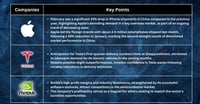Fed cannot wait to raise the interest rate in days, good time to sell EUR/USD?
Result of UK election set for more volatility in GBP in short term, but medium-term outlook could be positive
On Friday morning as UK election results ended in a hung parliament, there are many more questions to befuddle the market. Among them, who will now negotiate Brexit for the UK and how long the new government can last could be the most important. GBP is extending its overnight losses after confirmation that the UK election ended in a hung parliament. Prime Minister Theresa May has said she will try to form a government with the support of Northern Irish Unionists. While over the weekend, the DUP said no deal had been reached and discussions would continue next week. Prime Minister Theresa May is now widely seen as a prime minister at bay, seriously weakened by the election fiasco and forced to jettison her closest allies in a bid to save her own job.
Sterling’s path since the Brexit vote almost a year ago has been a series of repeated downward slides interspersed with occasional uplifts. The prospect of voters depriving Prime Minister Theresa May of a parliamentary majority took more than 2% off the pound against the dollar and the euro as the prospect of more political uncertainty. New political arithmetic of parliament is likely to involve an informal agreement between the Conservatives and the Democrat Unionist Party, such may require a fresh Brexit strategy. That’s why short-term outlook points to higher volatility. The unexpected outcome also increases the threat of further volatility for sterling and UK assets. Although pound had already priced in much of “hard Brexit” risk before this vote, the currency will continue to experience volatility through the governmental and Brexit talks. In the immediate term, the pound could fall sharply until there is further clarity.

Still, medium-term outlook for sterling may not be that negative. There is also possibility that the vote will effectively ‘soften’ Brexit is “a factor that has some bids in sterling”. Most recent guide for determining the pound’s direction was the last hung parliament of 2010-2015. Sterling fell more than 3% in the week after the election as Conservatives and Liberal Democrats engaged in horse-trading to form a government. But over the subsequent five months, it rallied more than 11%. As the aftermath of the 2010 election showed, the formation of a coalition government is no guarantee that we may see the pound stabilize over the coming weeks.
If negotiations go well, this could translate into a 1.30 to 1.35 range for the pound versus the dollar. But if the market anticipates a hard Brexit, the pound could drop to 1.20 to 1.25 against the dollar.
Any plans to shrink Fed’s balance sheet will be focused in Fed’s meeting this week
The key event this week is the Fed’s FOMC meeting, the Fed is going to decide whether to raise interest rates for the second time this year. We expect the Fed to do so, although some analysts have expressed their doubts about whether economic conditions, such as softness in first quarter GDP growth and stubbornly slow inflation, even as unemployment remains low. The dominant view at the central bank is that with the U.S. nearing full employment, the slack in the jobs market is more or less gone and it is a matter of time before core inflation hits target. We think the inflation and labor market condition remain moving within Fed’s expectation, and that is probably good enough for Fed to further normalize its key benchmark rate.
The real focus will be on Fed chair Janet Yellen’s press conference following the meeting. She is likely to give some insight into how the Fed perceives the mixed bag of economic readings and that will give the key guidance of its direction in second half of the year. There could also be some adjustments on tap for the Fed’s inflation or unemployment projections in light of recent data. Yellen may offer some insight on the Fed’s plans for starting to reduce the size of its $4.5tn balance sheet, which the Fed’s officials have been teasing for several months now. The biggest question could be whether that plan gets started at the September meeting or if central bankers would prefer to wait until December. We doubt Yellen would be clear regarding this issue in a few days. But if the FOMC plans to have its balance sheet runoff in September, U.S. dollar will be supported in near term.
One of the key reasons behind the dollar weakness through 2009-2012 is Fed enlarged its balance sheet aggressively, so if the shrinking progress to be confirmed in later days, the strengthen of the greenback is likely to be seen.
Our Picks
EUR/USD – Slightly bearish. Upward moves in EUR/USD looks a bit exhausted as it failed to break the key resistance level near 1.13. Some selling flows could appear ahead of the FOMC meeting, and price may move towards 1.1140.

GBP/USD – Bearish. Negative sentiment on GBP will continue looming amid various uncertainties after the unexpected result of UK election. Pair might move towards 1.265.

XAU/USD (Gold) – Slightly bearish. Expect some dollar strength after UK election, so gold price may drop to 1250.

Top News This Week (GMT+8 time zone)
U.S.: FOMC meeting, Thursday, 15th June, 2am
We expect the Fed to raise the interest rate by 25bps
New Zealand: 1Q GDP q/q, Thursday, 15th June, 6.45am
We expect figures to come in at 0.6% (previous at 0.4%)
Fullerton Markets Research Team
Your Committed Trading Partner














